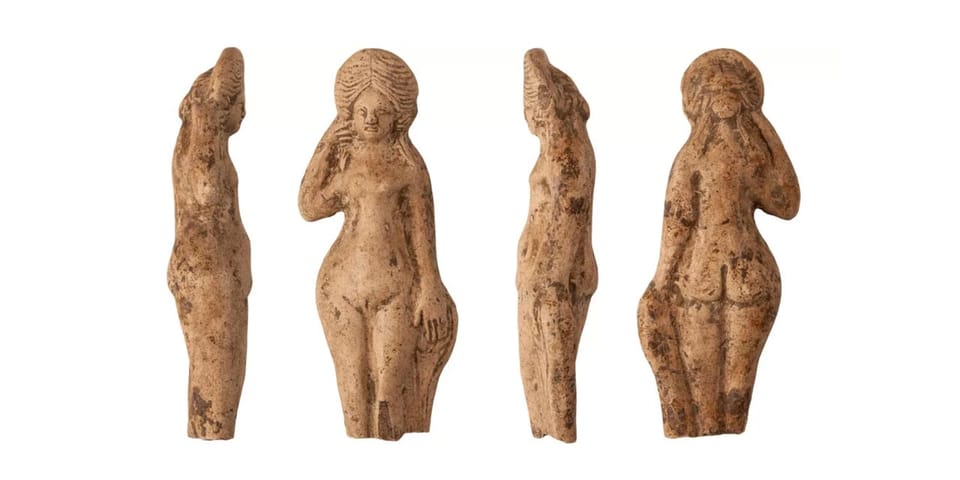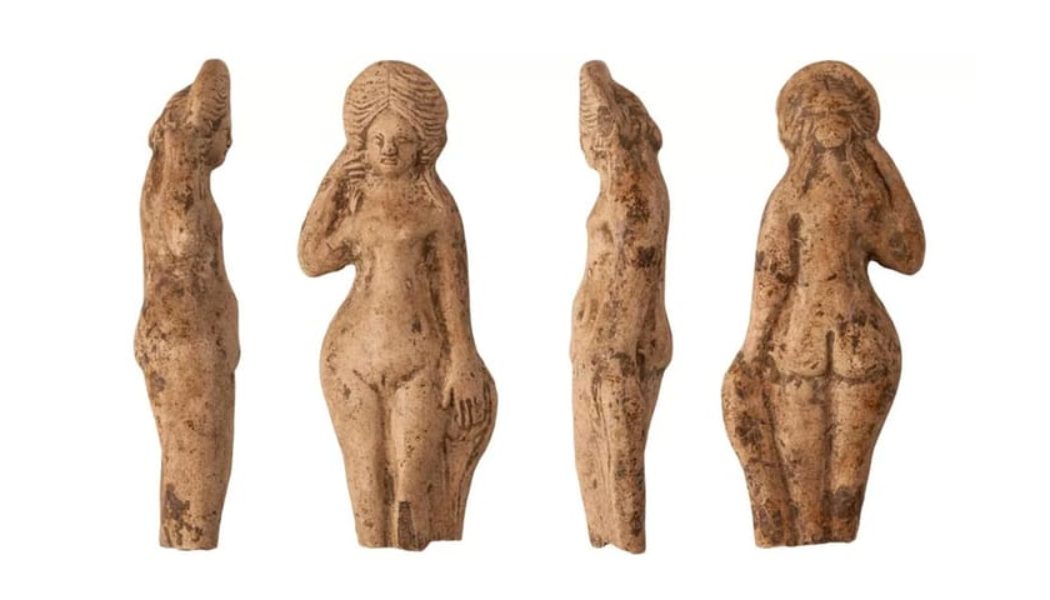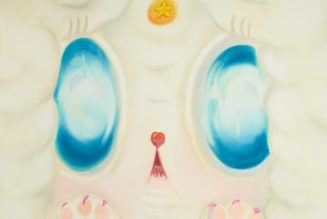
In a Roman-era trash heap located in Brittany, northwestern France, researchers from the French National Insititute of Preventive Archaeological Research (INRAP) discovered two terracotta statuettes of the goddess Venus, pottery fragments, coins, glass shards and clothing pins from 1,800 years ago, according to a Live Science report.
Made from Burgundy clay, the first Venus figurine depicts Venus genetrix, or the mother goddess, with a torso dressed with fabric, and the second statuette resembles Venus anadyomene, showcasing the nude goddess rising out of the sea.
“We regularly find this kind of statuette during excavations, but they are rarely as well-preserved and as special as this one,” the site’s manager Nicolas Ménez, said in an interview with the French newspaper Figaro. “We haven’t cleaned it yet and we want to preserve any traces of pigments. We’re still at the beginning of the story about this Venus.”
The Venus figures were found among the aforementioned items in a former shale quarry that was most likely used to construct the Roman town of Condate Riedonum in the first century A.D. The site, which measures 6.5 feet deep, was formerly the primary settlement of the Gallic Riedones tribe. Archeologists believe that the quarry is much larger than the trash heap dissected by INRAP and that it likely continues underneath a nearby primary school, according to Artnet.
In more art news, Fondazione Prada and David Cronenberg join forces on Anatomical Waxes.









